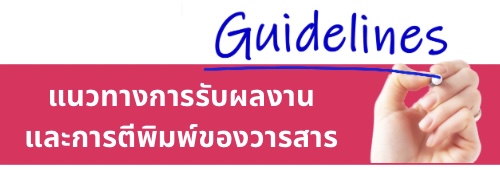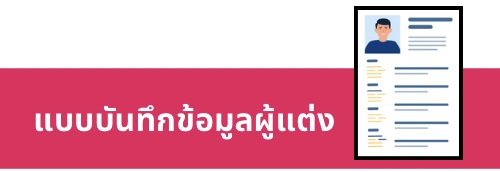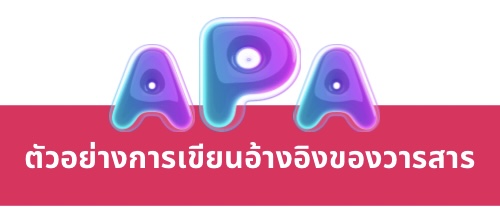ปัจจัยเชิงสาเหตุที่มีอิทธิพลต่อสมรรถนะการรู้สารสนเทศทางการพยาบาลของนักศึกษาพยาบาล
คำสำคัญ:
สมรรถนะการรู้สารสนเทศทางการพยาบาล, นักศึกษาพยาบาล, การวิเคราะห์โมเดลสมการโครงสร้างบทคัดย่อ
งานวิจัยนี้มีวัตถุประสงค์เพื่อศึกษาระดับสมรรถนะการรู้สารสนเทศทางการพยาบาล และความสัมพันธ์เชิงสาเหตุที่มีอิทธิพลต่อสมรรถนะการรู้สารสนเทศทางการพยาบาลของนักศึกษาพยาบาล ตัวอย่างคือ นักศึกษาพยาบาล ชั้นปีที่ 2 - 4 วิทยาลัยพยาบาลกองทัพบก วิทยาลัยพยาบาลกองทัพเรือ วิทยาลัยพยาบาลทหารอากาศ วิทยาลัยพยาบาลตำรวจ และโรงเรียนพยาบาลรามาธิบดี คณะแพทยศาสตร์โรงพยาบาลรามาธิบดี จำนวน 839 คน เครื่องมือที่ใช้ในการวิจัยคือ แบบสอบถามปัจจัยที่เกี่ยวกับสมรรถนะการรู้สารสนเทศทางการพยาบาล และสมรรถนะการรู้สารสนเทศทางการพยาบาล วิเคราะห์ข้อมูลโดยใช้สถิติเชิงบรรยาย และการวิเคราะห์โมเดลความสัมพันธ์เชิงสาเหตุด้วยโปรแกรม LISREL
ผลการวิจัยพบว่า นักศึกษาพยาบาลมีระดับสมรรถนะการรู้สารสนเทศทางการพยาบาลโดยรวมอยู่ในระดับค่อนข้างสูง (M = 4.15, SD = .68) และโมเดลความสัมพันธ์เชิงสาเหตุที่มีอิทธิพลต่อสมรรถนะการรู้สารสนเทศทางการพยาบาลของนักศึกษาพยาบาลมีความสอดคล้องกับข้อมูลเชิงประจักษ์ (2 (df = 32, N = 839) = 117.36, p = .000, CFI = .997, GFI = .980, AGFI = .936, RMSEA = .056, SRMR = .026) ตัวแปรทำนายทั้งหมดสามารถร่วมกันอธิบายสมรรถนะการรู้สารสนเทศทางการพยาบาลของนักศึกษาพยาบาลได้ร้อยละ 54.10 และมีอิทธิพลต่อกันทั้งทางตรงและทางอ้อมในเชิงบวก ผลการวิจัยนี้เป็นประโยชน์ต่ออาจารย์ในการพัฒนาโปรแกรมในการส่งเสริมสมรรถนะการรู้สารสนเทศทางการพยาบาลของนักศึกษาพยาบาลได้
Downloads
เอกสารอ้างอิง
Abdrbo, A. A. (2015). Nursing informatics competencies among nursing students and their relationship to patient safety competencies: Knowledge, attitude, and skills. Computers, Informatics, Nursing, 33(11), 509-514.
Bandura, A. (1977). Self-efficacy: Toward a unifying theory of behavioral change. Psychological Review, 84(2), 191-215. https://doi.org/10.1037//0033-295x.84.2.191
Best, J. W., & Kahn, J. V. (2016). Research in education (10th ed.). Harlow: Pearson Education.
Choi, J., & Bakken, S. (2013). Validation of the self-assessment of nursing informatics competencies scale among undergraduate and graduate nursing students. Journal of Nursing Education, 52(5), 275-282.
Foibe, A. J. (2020). Nursing informatics competencies in the nursing students in a university in the western cape (Master of nursing education program). Faculty of Community and Health Sciences, University of the Western Cape, South Africa.
Hair, Jr. J.F., Black, W. C., Babin, B. J., & Anderson, R. E. (2010). Multivariate data analysis (7th ed.). New Jersey, NJ: Pearson Prentice Hall.
Hwang, J-I., & Park, H-A. (2011). Factors associated with nurses' informatics competency. Computers, Informatics, Nursing, 29(4), 256-262.
Jacobs, S. K., Rosenfeld, P., & Haber, J. (2003). Information literacy as the foundation for evidence-based practice in graduate nursing education: A curriculum-integrated approach. Journal of Professional Nursing, 19(5), 320-328.
Khezri, H., & Abdekhoda, M. (2019). Assessing nurses’ informatics competency and identifying its related factors. Journal of Research in Nursing, 24(7), 529-538.
Khumyu, A., Chupan, S., Puttaruksa, L., Rattanajarana, S., Songaiad, D., & Chunchomgul, C. (2021). Factors related to professional nursing competency among nursing students at a university in the eastern region. The Journal of Faculty of Nursing Burapha University, 29(1), 1-12.
Kim, A. Y., & Sim, I. O. (2020). Mediating factors in nursing competency: A structural model analysis for nurses’ communication, self-leadership, self-efficacy, and nursing performance. International Journal of Environmental Research and Public Health, 17(18), 1-14.
Kleib, M., & Nagle, L. (2018). Factors associated with canadian nurses' informatics competency. Computers, Informatics, Nursing, 36(8), 406-415.
Lee, J. J., & Clarke, C. L. (2015). Nursing students' attitudes towards information and communication technology: An exploratory and confirmatory factor analytic approach. Journal of Advanced Nursing, 71(5), 1181-1193.
Herliani, Y., Harun, H., Setyawati, A., & Ibrahim, K. (2018). Self-efficacy and the competency of nursing students toward the implementation of evidence-based practice. Jurnal Ners, 13(1), 50-56.
Park, J., & Hwang, J-I. (2020). Psychometric evaluation of the korean version of the student evidence-based practice questionnaire (S-EBPQ). Asian Nursing Research, 15(1), 47-52.
Phalasri, A., Khakkunmalee, R., Maneesi, S., Lalun, A., & Kwathai, L. (2021). The relationship between literacy and acceptance of information technology and the information technology use behaviors in the nursing practices of nursing students. Journal of Health and Nursing Education, 27(1), 43-57.
Prior, D. D., Mazanov, J., Meacheam, D., Heaslip, G., & Hanson, J. (2016). Attitude, digital literacy and self efficacy: Flow-on effects for online learning behavior. The Internet and Higher Education, 29(1), 91-97.
Rahman, A. (2015). Development of a nursing informatics competency assessment tool (Doctor of philosophy program in nursing practice). Health Services Faculty, Walden University.
Ruzafa-Martinez, M., Lopez-Iborra, L., Moreno-Casbas, T., & Madrigal-Torres, M. (2013). Development and validation of the competence in evidence based practice questionnaire (EBP-COQ) among nursing students. BMC Medical Education, 13(19), 1-10.
Schumacker, R. E., & Lomax, R. G. (2004). A beginner's guide to structural equation modeling (4th ed.). New York, NY: psychology press.
Silapavitayatorn, B., & Chitpakdee, B. (2020). The use of health information technology in nursing for patient safety. Journal of Nursing and Health Care, 38(2), 6-14.
Sommer, M., Kohnen, A., Ritzhaupt, A., & Hampton, J. (2021). Investigation of the validity evidence of the information literacy self-efficacy scale (ILSES) among undergraduate students. Communications in Information Literacy, 15(1), 1-23.
Thailand Nursing and Midwifery Council. (2018). Core competencies for bacculaureate nursing education, master of nursing science, doctor of philosophy, board certified training program and nursing specialty short course program. Retrieved from https://www.tnmc.or.th/
Thongpaknum, C. (2017). The relationships among knowledge, attitude and behavior in using information technology for nursing of air force nursing students in royal thai air force nursing college, academic year 2016. Journal of The Royal Thai Army Nurses, 18(3), 217-227.
Tubaishat, A. (2014). An investigation into the attitudes of nursing students toward technology. The journal of nursing research, 22(2), 119-125.
Warshawski, S., Itzhaki, M., & Barnoy, S. (2019). Nurse and nurse student attitudes and perceived self-efficacy in use of information and communication technologies: Professional and cultural differences. Computers, Informatics, Nursing, 37(1), 20-28.

ดาวน์โหลด
เผยแพร่แล้ว
รูปแบบการอ้างอิง
ฉบับ
ประเภทบทความ
สัญญาอนุญาต
ลิขสิทธิ์ (c) 2022 วารสารพยาบาลตำรวจ

อนุญาตภายใต้เงื่อนไข Creative Commons Attribution-NonCommercial-NoDerivatives 4.0 International License.
ผลงานที่ได้ตีพิมพ์แล้วจะเป็นลิขสิทธิ์ของวารสารพยาบาลตำรวจ














